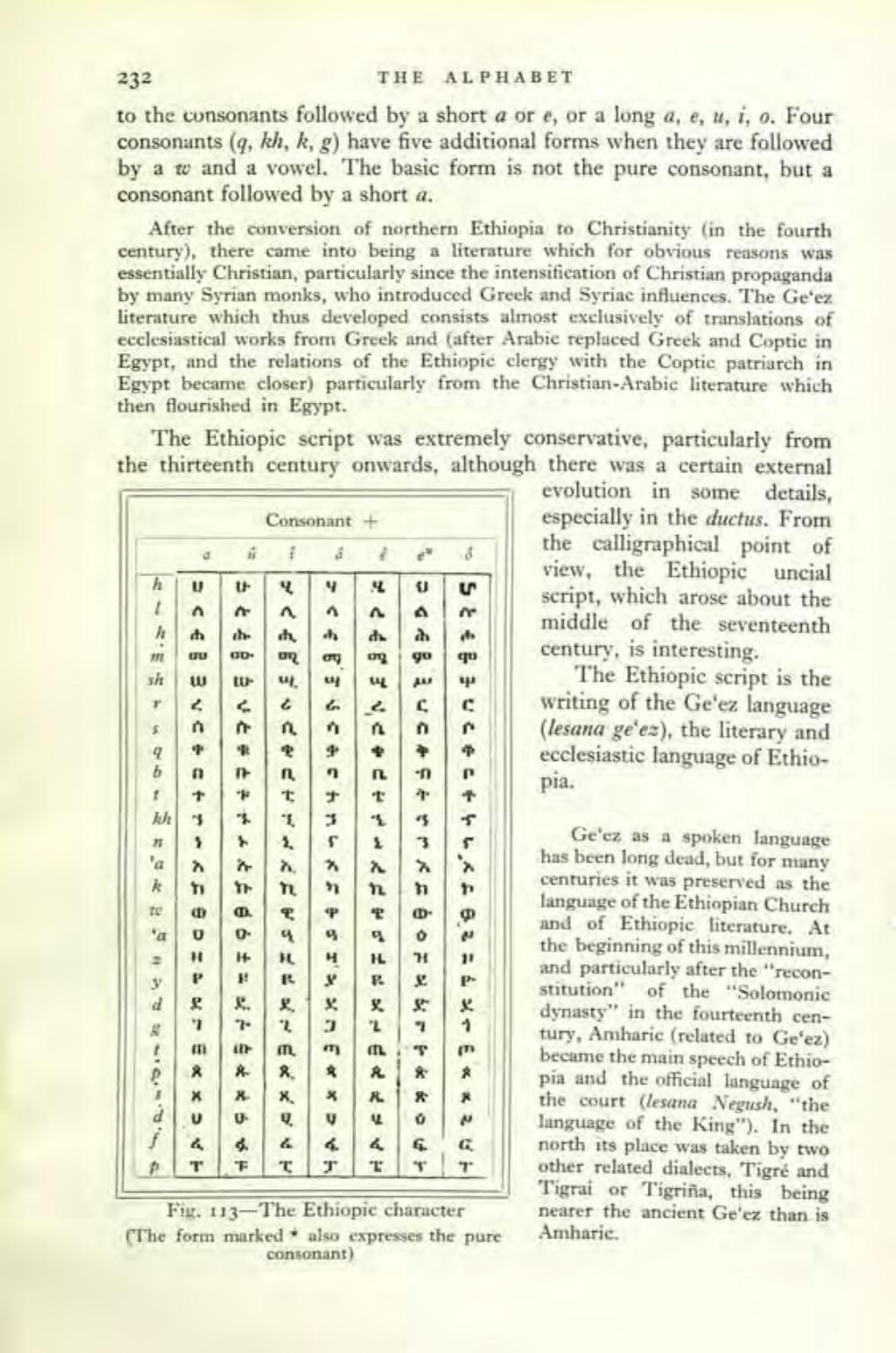________________
232
THE ALPHABET
to the consonants followed by a short a or e, or a long a, e, u, i, o. Four consonants (q, kh, k, g) have five additional forms when they are followed by a w and a vowel. The basic form is not the pure consonant, but a consonant followed by a short a.
After the conversion of northern Ethiopia to Christianity (in the fourth century), there came into being a literature which for obvious reasons was essentially Christian, particularly since the intensification of Christian propaganda by many Syrian monks, who introduced Greek and Syriac influences. The Ge'ez literature which thus developed consists almost exclusively of translations of ecclesiastical works from Greek and (after Arabic replaced Greek and Coptic in Egypt, and the relations of the Ethiopic clergy with the Coptic patriarch in Egypt became closer) particularly from the Christian-Arabic literature which then flourished in Egypt.
The Ethiopic script was extremely conservative, particularly from the thirteenth century onwards, although there was a certain external
evolution in some details, especially in the ductus. From the calligraphical point of view, the Ethiopic uncial script, which arose about the middle of the seventeenth century, is interesting.
The Ethiopic script is the writing of the Ge'ez language (lesana ge'ez), the literary and ecclesiastic language of Ethiopia.
h
L h
m
sh
T
21
S n
ねねきよ
q 中
b
'a
k
U
1 +
To
d
khs
CB Bvcect-FDAKTE
'a
ሐ
3
ա
n
H
P
ደ
7
m
R X
U
&
Consonant + #18
५
#
-m
ver***
ኙ
<45302CHAELEKE
TH
^
the ሒ ሓ d ሕ
GD
n
n
1
TL
叉
. u મ AL
ጢ
4
>< 4656chnxFE
2245212CELL
X.
見
&
Τ
ㄓ
8
ay og go
H
५
3
m
文
ረ
y P
n
H
524870cecttu,<=-Ex DAARRUCAFECXFkkod
X
U
4.
T T
8
と
qu
G
T T
Fig. 113-The Ethiopic character
(The form marked also expresses the pure
consonant)
Ge'ez, as a spoken language has been long dead, but for many centuries it was preserved as the language of the Ethiopian Church and of Ethiopic literature. At the beginning of this millennium, and particularly after the "reconstitution" of the "Solomonic dynasty" in the fourteenth century, Amharic (related to Ge'ez) became the main speech of Ethiopia and the official language of the court (lesana Negush, "the language of the King"). In the north its place was taken by two other related dialects, Tigré and Tigrai or Tigriña, this being nearer the ancient Ge'ez than is Amharic.




